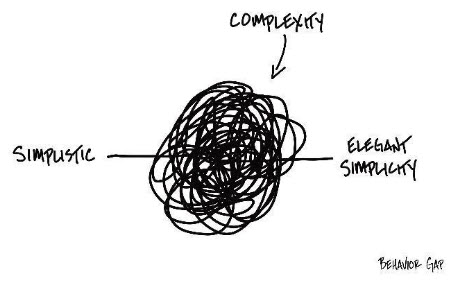System
A system is a set of interrelated and interdependent elements (a.k.a. parts, things), groups (a.k.a. types, categories, sets) into which the elements fall, and interaction patterns that describe the interactions between the different types of elements within a system which has purpose. A system has a nature and structures.
A system act according to a set of known rules to form a unified whole. A system has boundaries. A system can be natural, such as the solar system, or designed by humans, such as a bicycle. Or, a system can be a hybrid having natural and designed aspects. Modern systems theory also acknowledges hybrid systems (e.g., urban ecosystems shaped by both natural processes and human design).
A system tends to have some deliberate, intentional aim; the goal(s) and/or objective(s) of the system. A system can be a system of systems (i.e. systems can have subsystems). A system exhibits a pattern of behavior.
A natural system is a system that occurs naturally (i.e. no human involvement in the natural system). A designed system is a system intentionally created by humans (i.e. does not otherwise exist in nature). A logical system is a type of designed system based on logic. A designed system is engineered to meet particular set of needs and can be adjusted or redesigned. Systems evolve over time.
A logical system can be explained using a logical theory. A logical theory is an abstract conceptualization of specific important details of the nature and structure of some logical system which relates to some area of knowledge. The logical theory provides a way of thinking about the logical system by means of logical statements, deductive reasoning to derive logical consequences of the logical theory by explaining the logical patterns of that system.
A logical theory provides a description and an explanation.
A logical theory enables a community of stakeholders trying to achieve a specific goal or objective or a range of goals/objectives to agree on the nature and structure in the form of important logical statements used for capturing meaning or representing a shared understanding of and knowledge in some area of knowledge. A logical theory forms a conceptualization. The conceptualization helps stakeholders understand each other and communicate with respect to the system.
A logical theory enables a community of stakeholders to achieve a shared understanding of a system. Using that logical theory a system can be discussed and improved creating a virtuous cycle of improvement.
The following is a graphic which shows the full set of capabilities necessary for a system which is modeled after the semantic web stack or "layer cake":
A system is a general concept. A software agent is one specific type of system.
A system can be adequate or inadequate meaning that the system tested and validated to yield reliability and accuracy consistent with the specified purpose of the goals and objectives of the system stakeholders. A logic system is said to be adequate if it meets the aim of the stakeholders of the logic system.
A system is properly functioning if that system is consistent (e.g. there are no inconsistencies or contradictions), the system is complete (e.g. meaning the system has high coverage), and the system is precise (e.g. meaning the system reflects reality). A properly functioning system forms a virtuous cycle.
Systems do not exist in isolation. One system can interact with one or more other systems to create a workflow. One system can be a subsystem of some other larger system.
Systems should have governance which provide checks and balances and scrutiny.
Additional Information:




Comments
Post a Comment